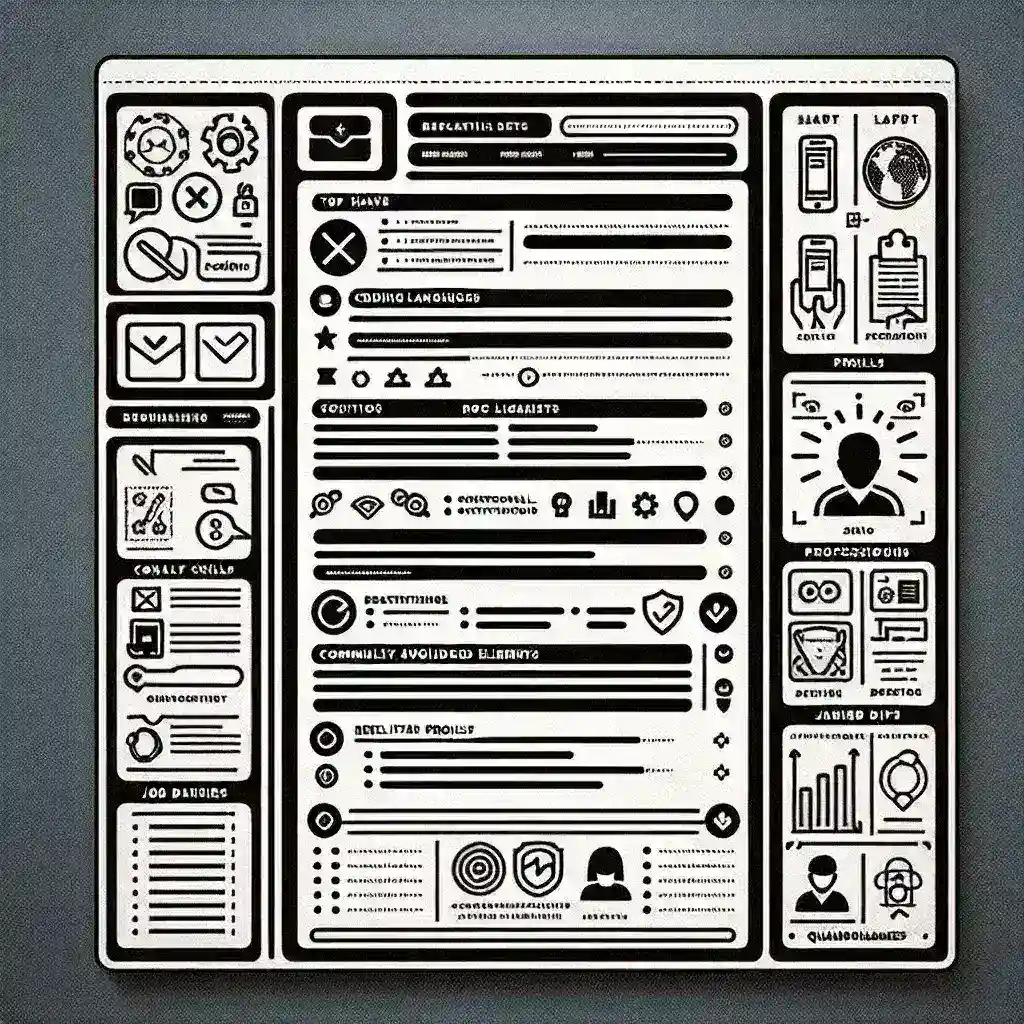In today’s rapidly evolving tech industry, a well-crafted resume can make all the difference in landing your dream job. Whether you’re a seasoned tech professional or just starting your career, understanding what to include and what to avoid on your tech resume is crucial. This article will guide you through the key elements that can help you stand out and the common mistakes to steer clear of.
What to Include in Your Tech Resume
1. Contact Information
Start with your full name, phone number, email, and LinkedIn profile. Ensure this information is accurate and professional. Avoid using personal email accounts that may seem unprofessional, such as [email protected].
2. Professional Summary
A concise and compelling summary at the top of your resume can grab the attention of hiring managers. Highlight your most relevant skills, experience, and achievements. Tailor this section to the specific job you are applying for to show how you align with the company’s needs.
3. Technical Skills
List your technical skills, including programming languages, frameworks, tools, and platforms. Be specific and relevant to the job you are applying for. For example, if you’re applying for a backend developer role, highlight your expertise in Python, Django, and SQL.
4. Professional Experience
Detail your work history, starting with your most recent position. For each role, include the company name, your job title, the dates of employment, and a brief description of your responsibilities and achievements. Use action verbs and quantify your accomplishments when possible. For instance, mention how you increased website traffic by 30% or reduced server downtime by 25%.
5. Education and Certifications
List your educational background, including degrees, institutions, and graduation dates. If you have relevant certifications, such as AWS Certified Solutions Architect or Google Certified Professional Cloud Architect, include them here. These can significantly boost your credibility and marketability.
6. Projects and Portfolio
If you have personal or professional projects, include a section to showcase your work. Provide links to your GitHub repositories, personal websites, or any relevant platforms. Highlight the technologies used and the impact of your projects. This can give hiring managers a tangible sense of your capabilities.
7. Additional Sections (Optional)
Consider including sections for awards, publications, speaking engagements, or volunteer work if they are relevant and enhance your profile. These can add depth and show your dedication and expertise in the tech field.
What to Avoid in Your Tech Resume
1. Irrelevant Information
Avoid including information that is not directly related to the job you are applying for. For example, if you’re applying for a software development role, mentioning your experience in retail sales is likely unnecessary. Keep your resume focused and relevant to the position.
2. Overly Technical Jargon
While it’s important to demonstrate your technical skills, overloading your resume with jargon can make it difficult for non-technical hiring managers to understand. Use a balance of technical terms and clear, concise language to ensure your resume is accessible to a wider audience.
3. Typos and Grammatical Errors
Proofread your resume carefully to avoid any typos or grammatical errors. These can make you appear careless and unprofessional. Consider having a trusted friend or colleague review your resume for additional feedback.
4. Excessive Length
Keep your resume concise, ideally no longer than one or two pages. Hiring managers typically spend only a few seconds reviewing each resume, so make sure every word counts. Prioritize the most relevant and impactful information.
5. Generic Objectives
Avoid using generic objectives like ‘seeking a challenging position in a growing company.’ Instead, tailor your professional summary to the specific job and company. Show that you have a clear understanding of the role and how you can contribute to the organization.
6. Unprofessional Formatting
Use a clean, professional format that is easy to read. Avoid using overly creative or unconventional designs, as they can distract from the content. Stick to a standard font, such as Arial or Calibri, and use a consistent layout throughout your resume.
Conclusion
Crafting an effective tech resume is a critical step in your job search. By including the right elements and avoiding common pitfalls, you can create a resume that stands out and increases your chances of landing an interview. Remember to tailor your resume to each job application, highlight your most relevant skills and achievements, and keep it professional and concise. With these tips, you’ll be well on your way to success in the competitive tech industry.
